Serves 2-4
Level of difficulty, 3.25.
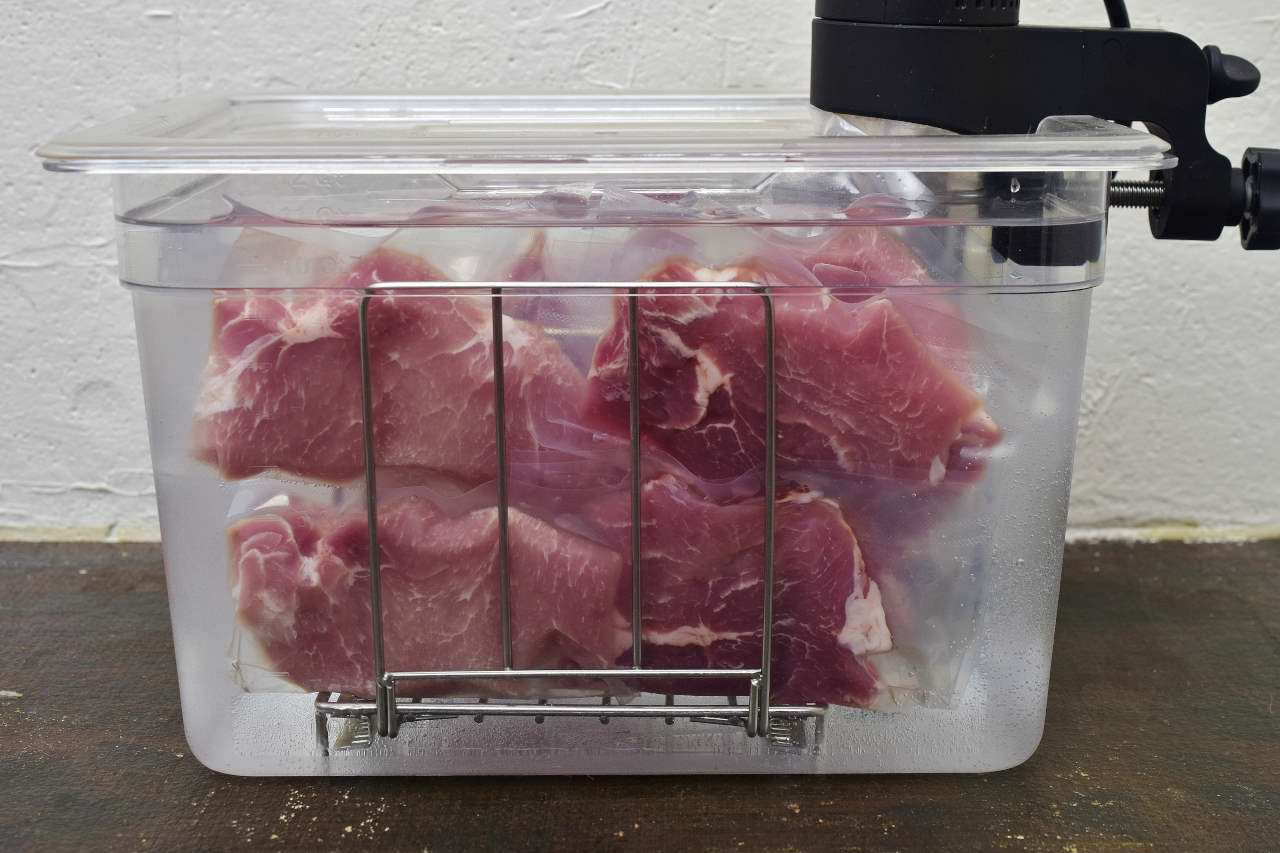
Procedure:
Preheat the sous vide bath to
131 F/55 C.
Process the pork medallion for three hours. Remove from the bath and shock in iced water until they achieve 70 F/21 C. Refrigerate to 40 F/4 C. This shocking procedure should always be practiced to avoid exposing the refrigerator and its contents to excessive amounts of ambient heat. Refrigerators and even freezers are not designed to nor capable of safely chilling hot foods in an acceptable amount of time.
Soak the sushi frame in cold water for half an hour before and after you use it. The first stage prevents the rice from sticking to it. The second stage rinses off any debris that remains on the frame. Little things.
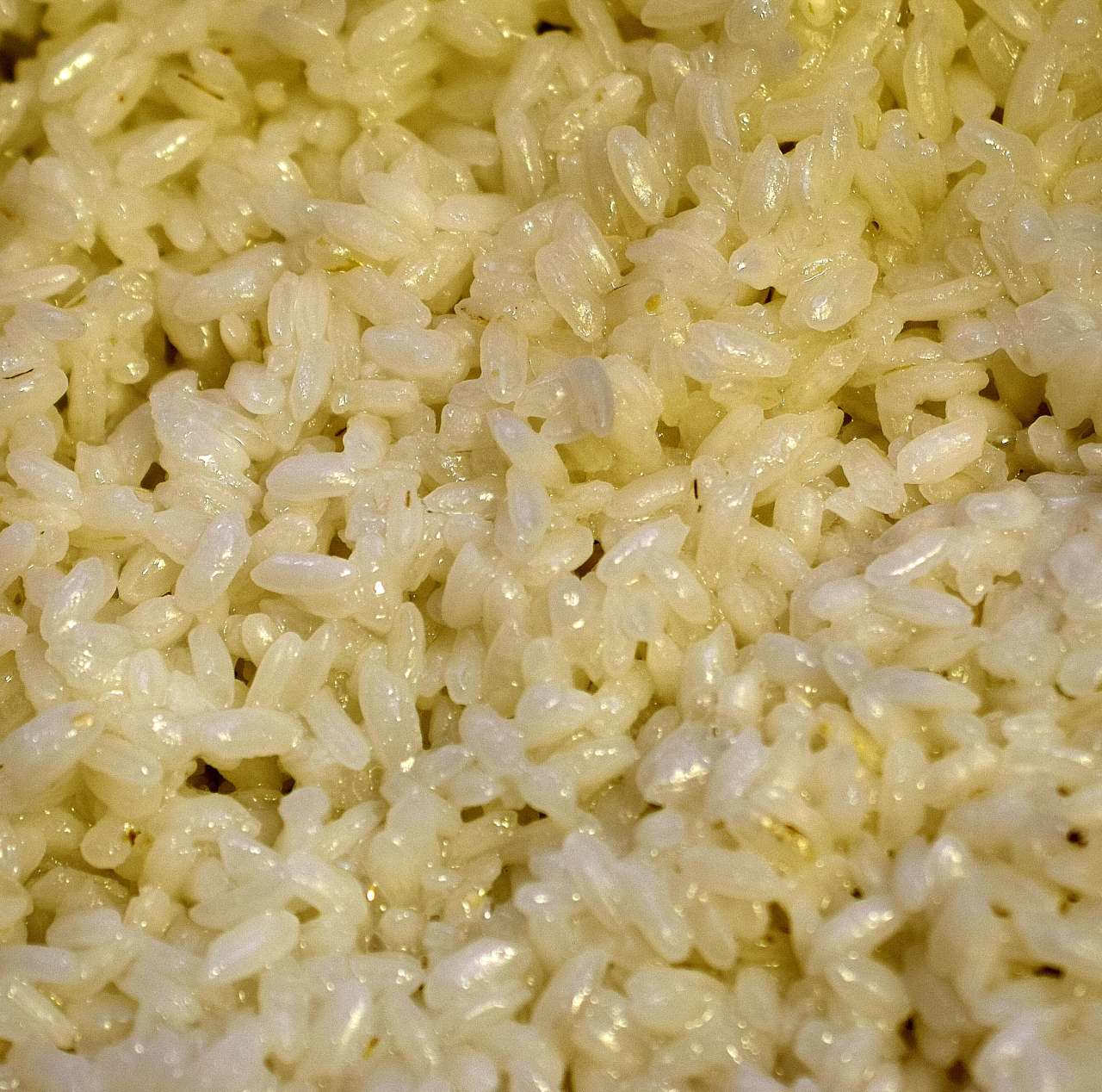
Cook the rice as per the directions on the package. You can use a rice steamer, but you don’t need to go out and buy one if you don’t have one. I plead guilty to occasionally cooking sushi rice in the microwave using a tall plastic container so it doesn’t foam over, but don’t tell anybody.
Once done, sprinkle with the vinegar and allow to cool uncovered–do not refrigerate. Put a paper towel on a work surface, and remove the medallion from the bag.
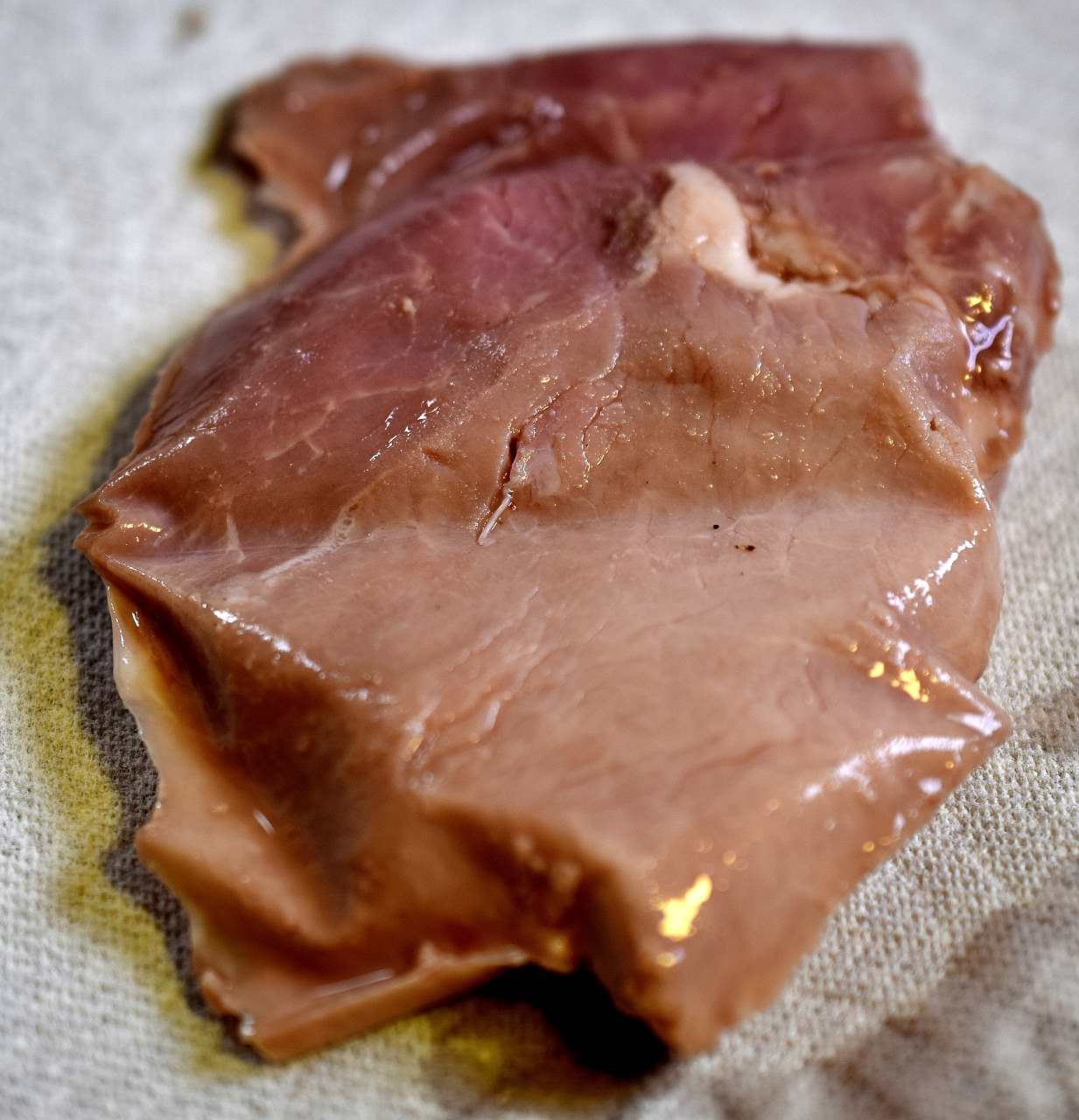
Pat dry with the paper towel, which you then discard.
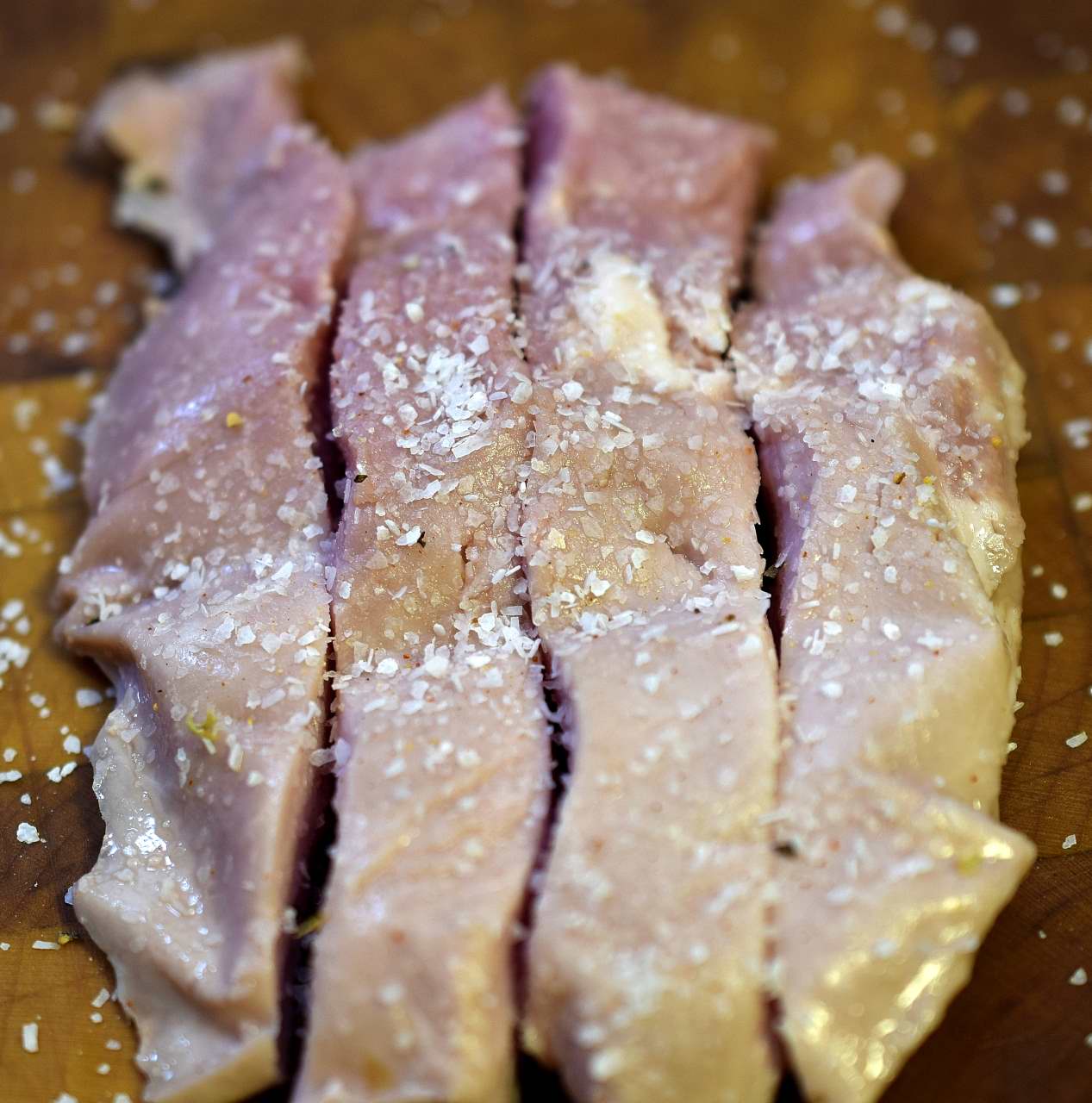
Cut the medallion into four uniform strips and sprinkle with kosher salt and ground black pepper.
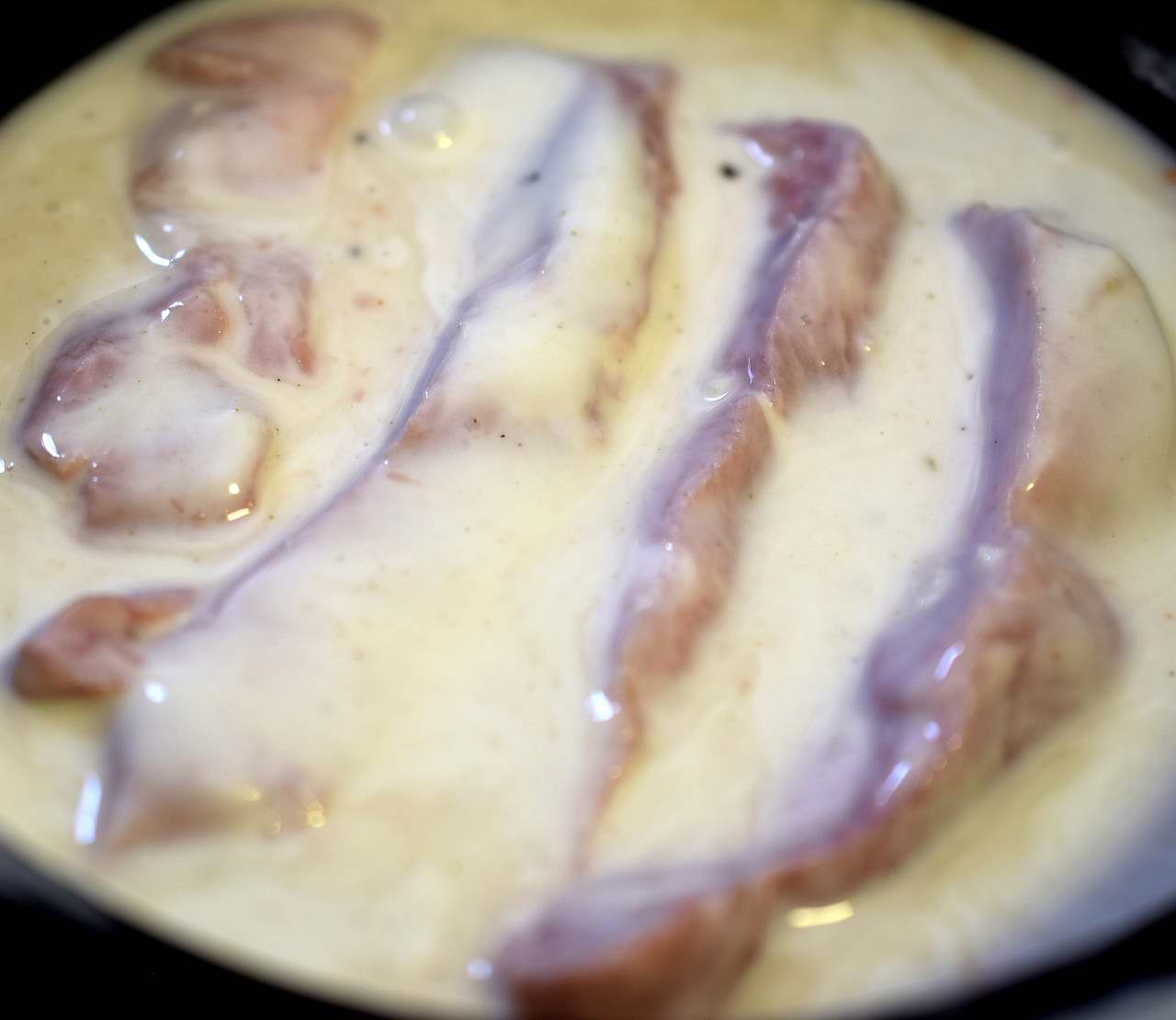
Submerge the pork strips in the tempura batter.

Roll the strips in a generous amount of panko crumbs until they are well coated. Refrigerate for one half hour to give the crumbs time to cling.

If you have thick asparagus, use a vegetable peeler to remove the tough skin. Lay the asparagus on the work surface, hold the tip gently and peel towards the root end–be careful not to break off the tips. This is not necessary if the asparagus is very thin.
Use a sharp knife to split the asparagus spears–this is not necessary if the asparagus is very thin.
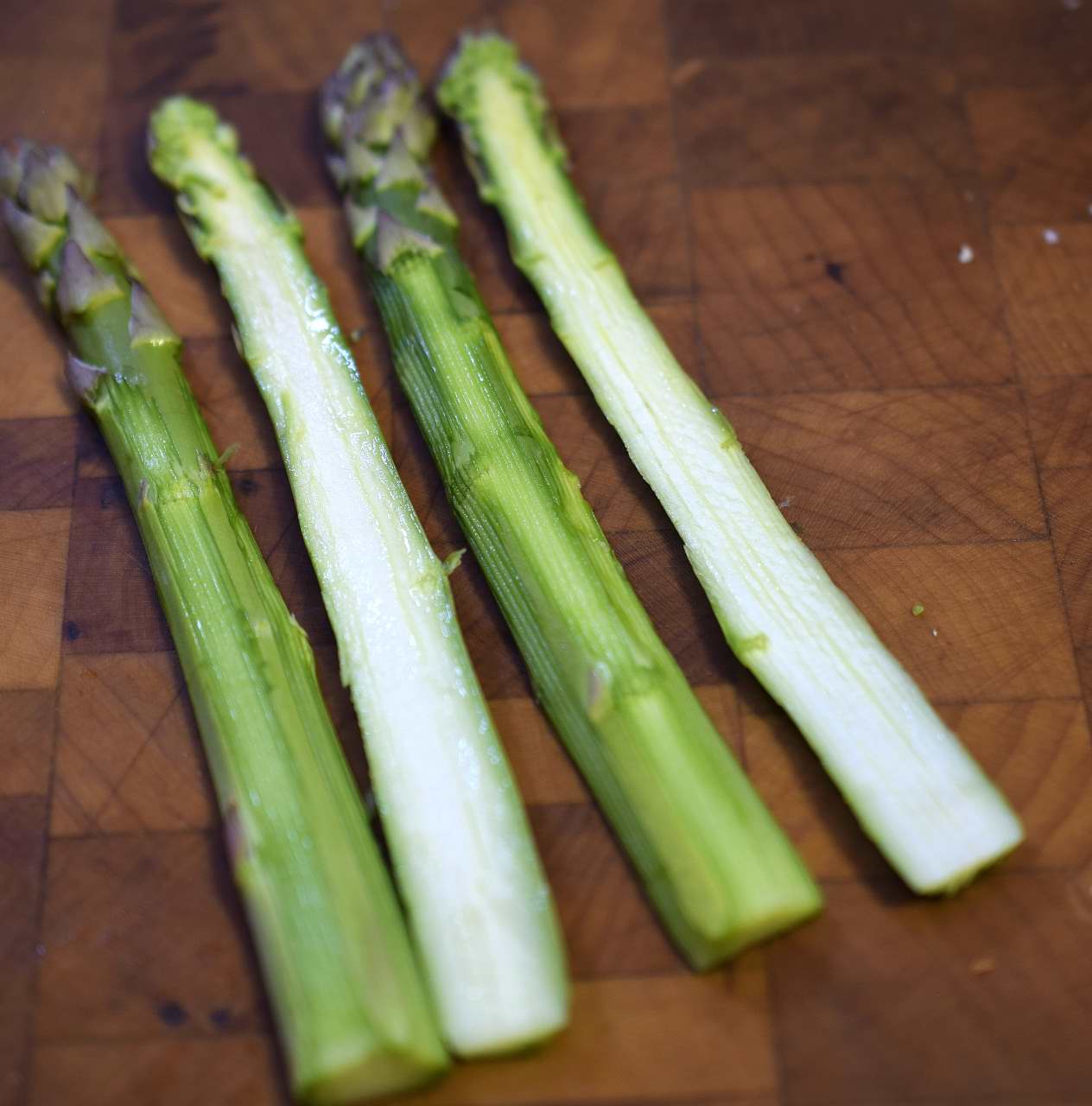
Heat the cast iron grill pan or skillet to 350 F/176 C. Drizzle a few drops of oil on the asparagus to coat.
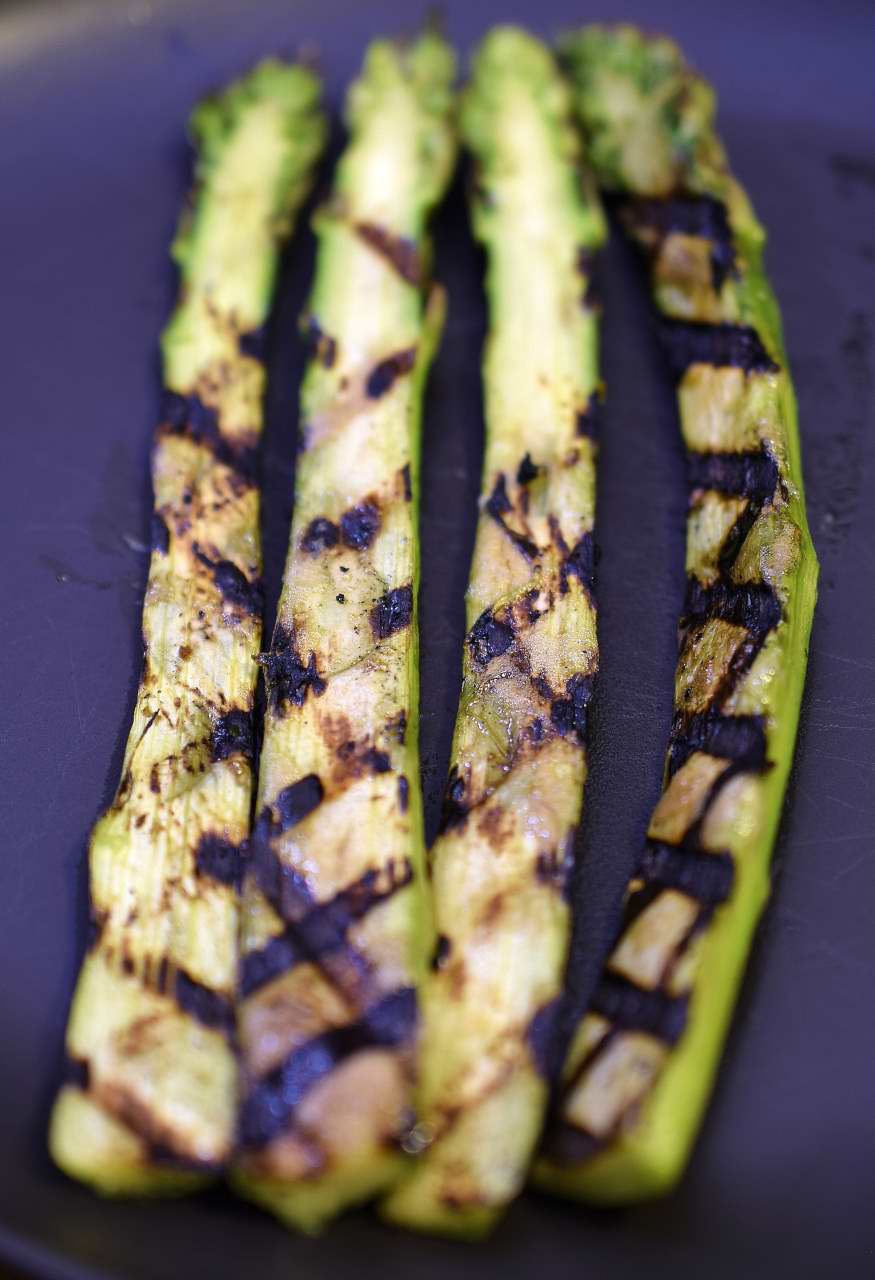
Grill or sear the asparagus on the flat side for thirty seconds. Use a spatula to hold the asparagus flat in the pan. Rotate 90 degrees and grill for another thirty seconds. to make the hash marks, OR
Sear in the skillet for 45 seconds on the flat side only–use a spatula to hold the asparagus flat in the pan.
Remove to a plate and set aside. Wipe the skillet clean and return to the stove. Add the oil to the skillet until it is 2″/6 cm deep–leave room in the pan for the oil to foam.
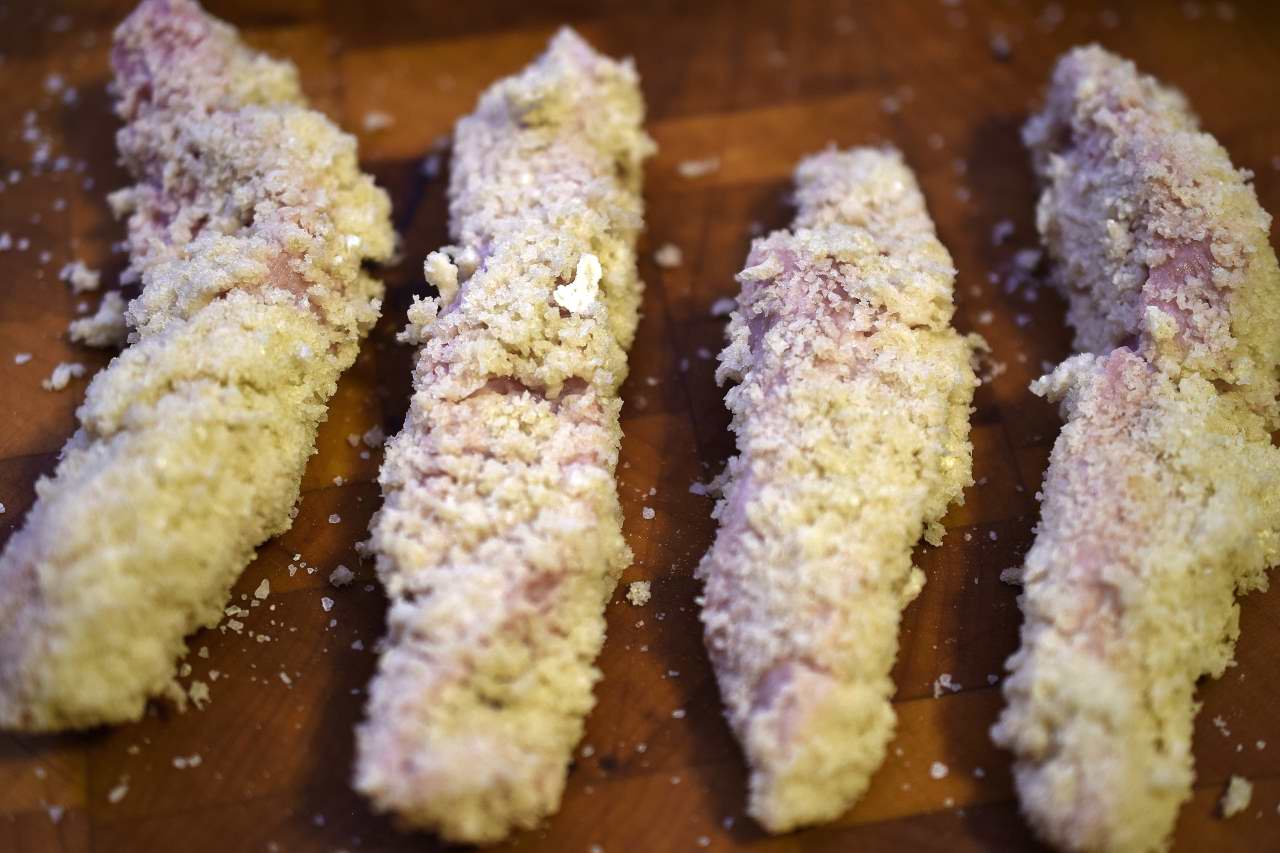
Remove the tonkatsu strips from the refrigerator and shake off the excess crumbs. Heat the oil in the pan to 325 F/160 C. Add one of the strips to the pan, wait a few seconds, and then add another one. Do not crowd the oil. Remember–the pork is already pasteurized, so we need only achieve the desirable color. Continue until all the pork strips have been fried.
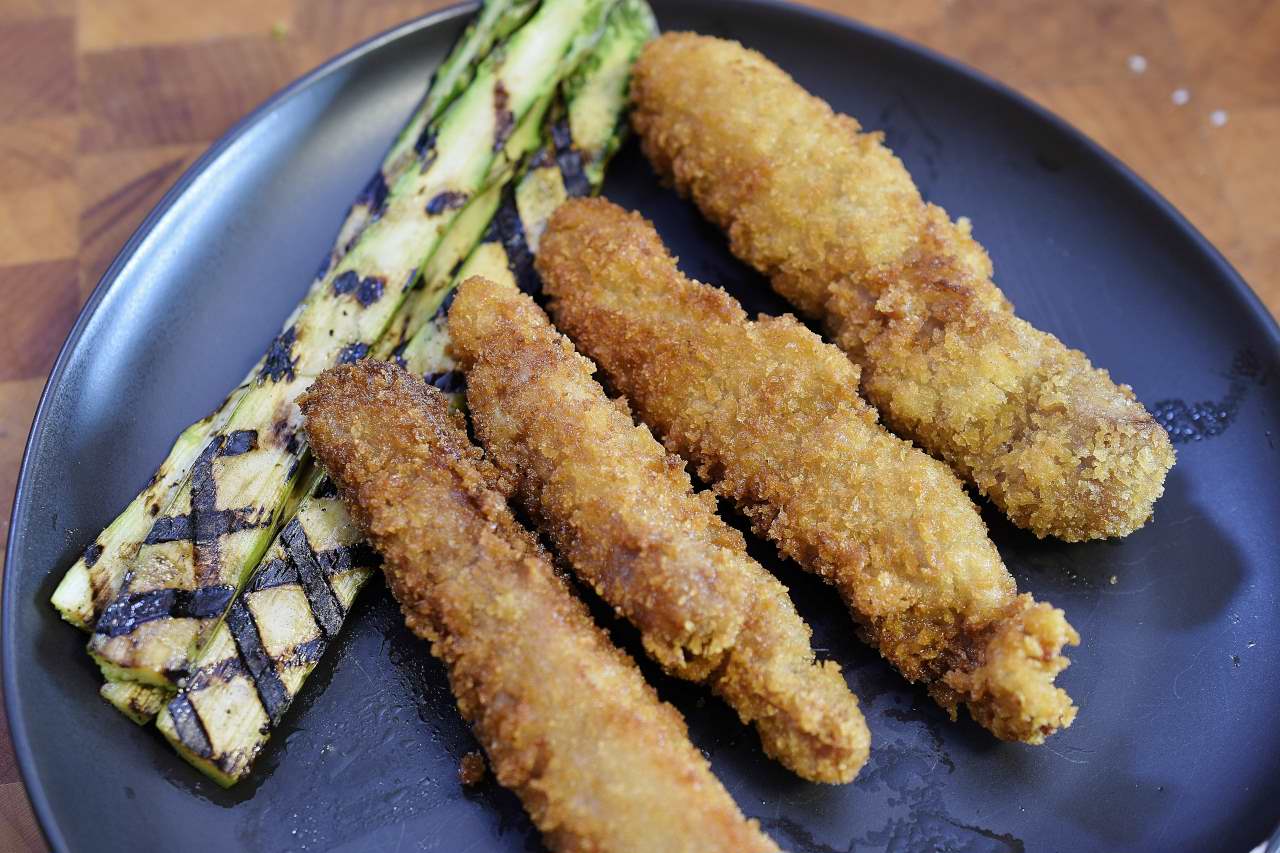
Drain the strips and stage to a cold plate. Give the strips a few minutes to cool.
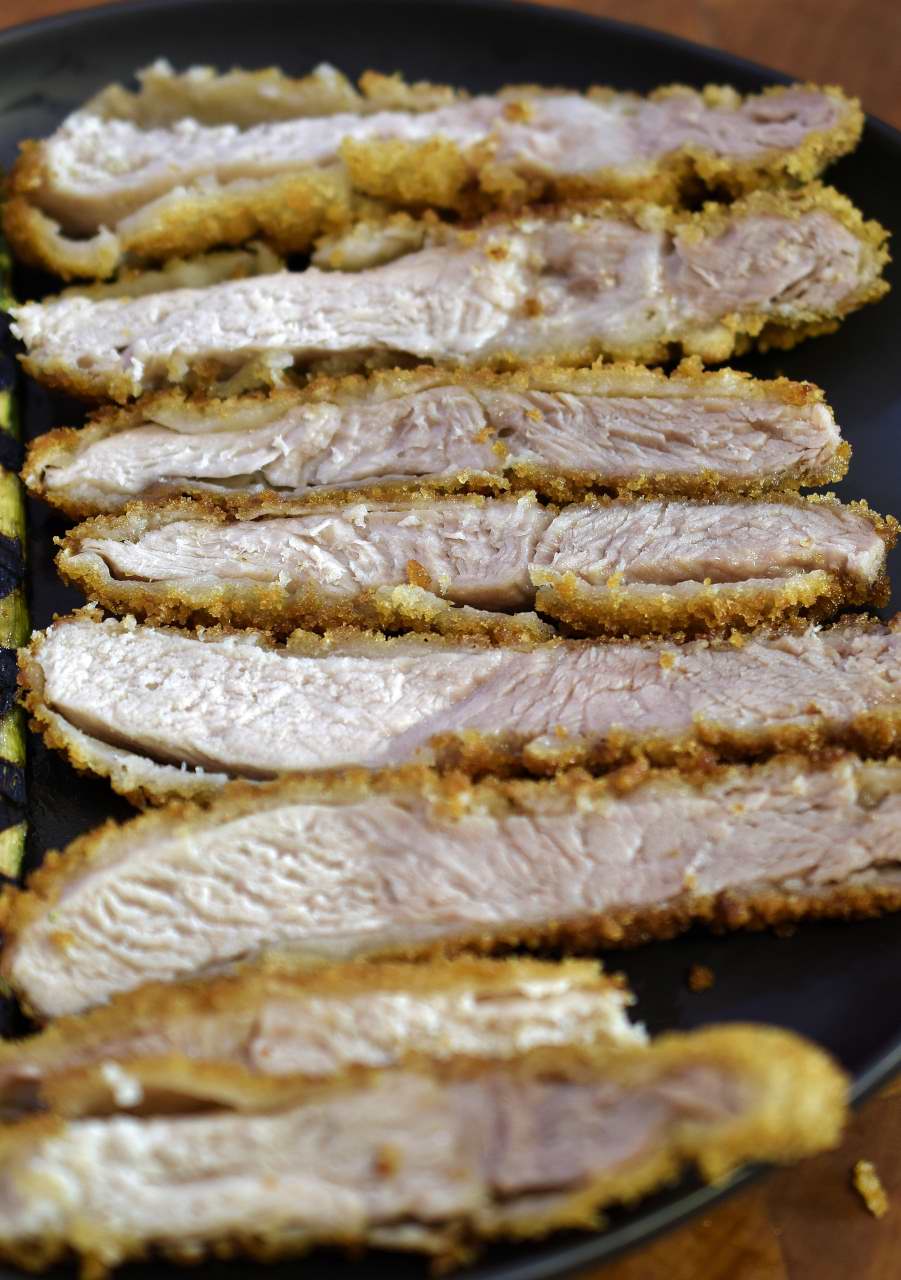
Cut each strip in half lengthwise. Sushi is small. Very small. This was the most difficult style adjustment for me. I frequently end up with twice as much as I need of everything. Split the avocado, remove the seed and use a tablespoon to remove the flesh from the skin.
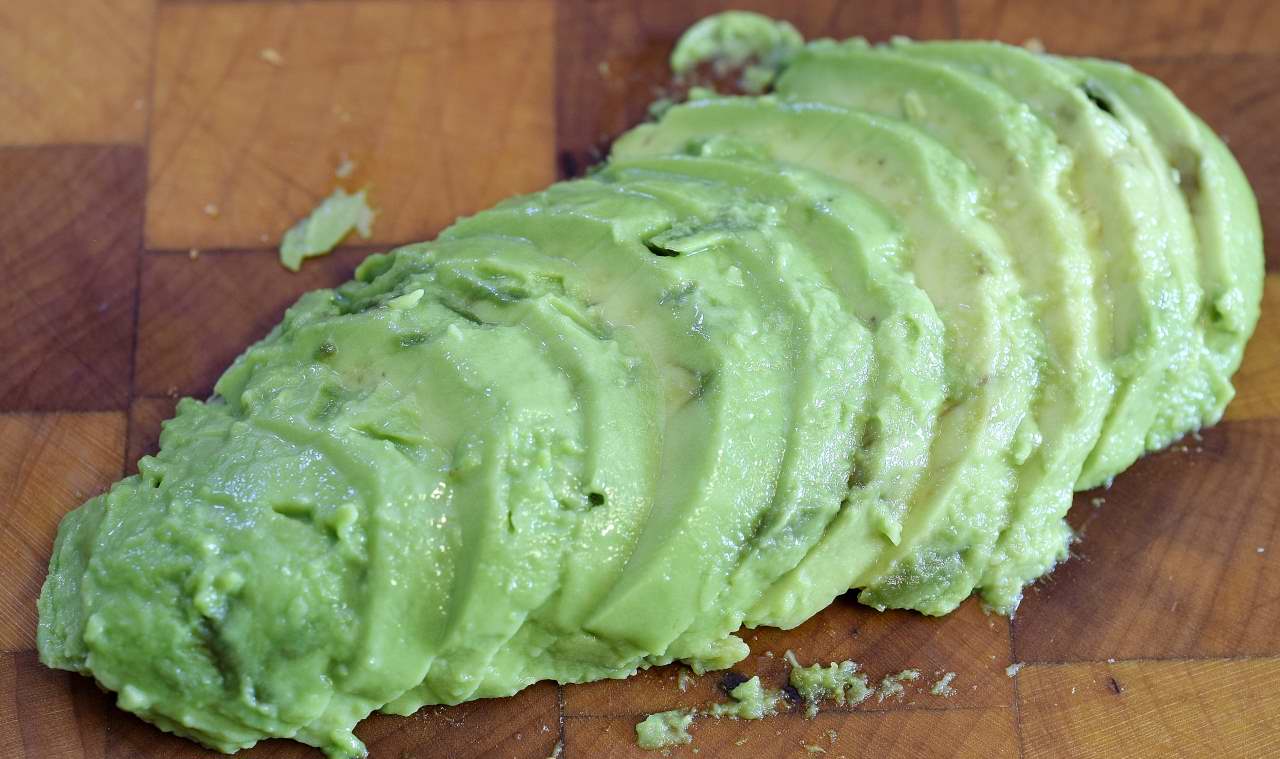
This is easier than it looks. Slice as thin as you can, uniformity is more important than anything else. Set aside. Using the bamboo mat wrapped in plastic is easy to learn, but this is even easier. The plastic wrap is a good idea, because the bamboo mats can harbor bacteria.
Take the sushi frame out of the water and dry it off with a clean towel. Lay a sheet of nori on the work space.
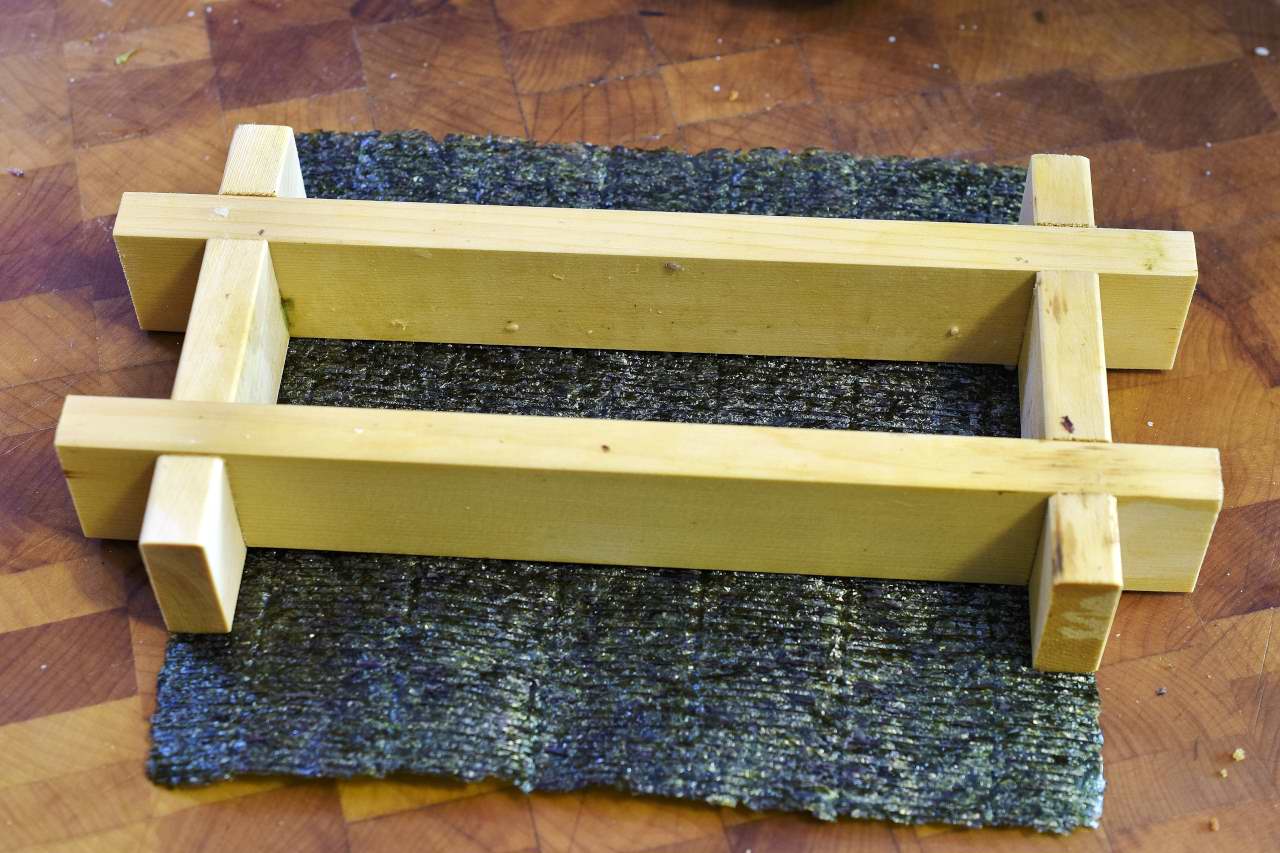
Lay the sushi frame on the nori. I think of all the crafty husbands who spent their weekend cutting a perfect hole for their immersion circulator in the ice chest that their in-laws gave them on the condition that they would be invited to the house for barbecue parties. Surely, they could figure out how to cut a few pieces of wood to make one of these frames. I am not so industrious. They are about $20, as I mentioned.

Use a fork to make a thin layer of the sticky rice in the mold–as thin as possible, but don’t be anxious about it–it’s going to be compressed in a few minutes. Even if it’s not even, it won’t even matter. Lay the avocado in one end of the mold as shown below.
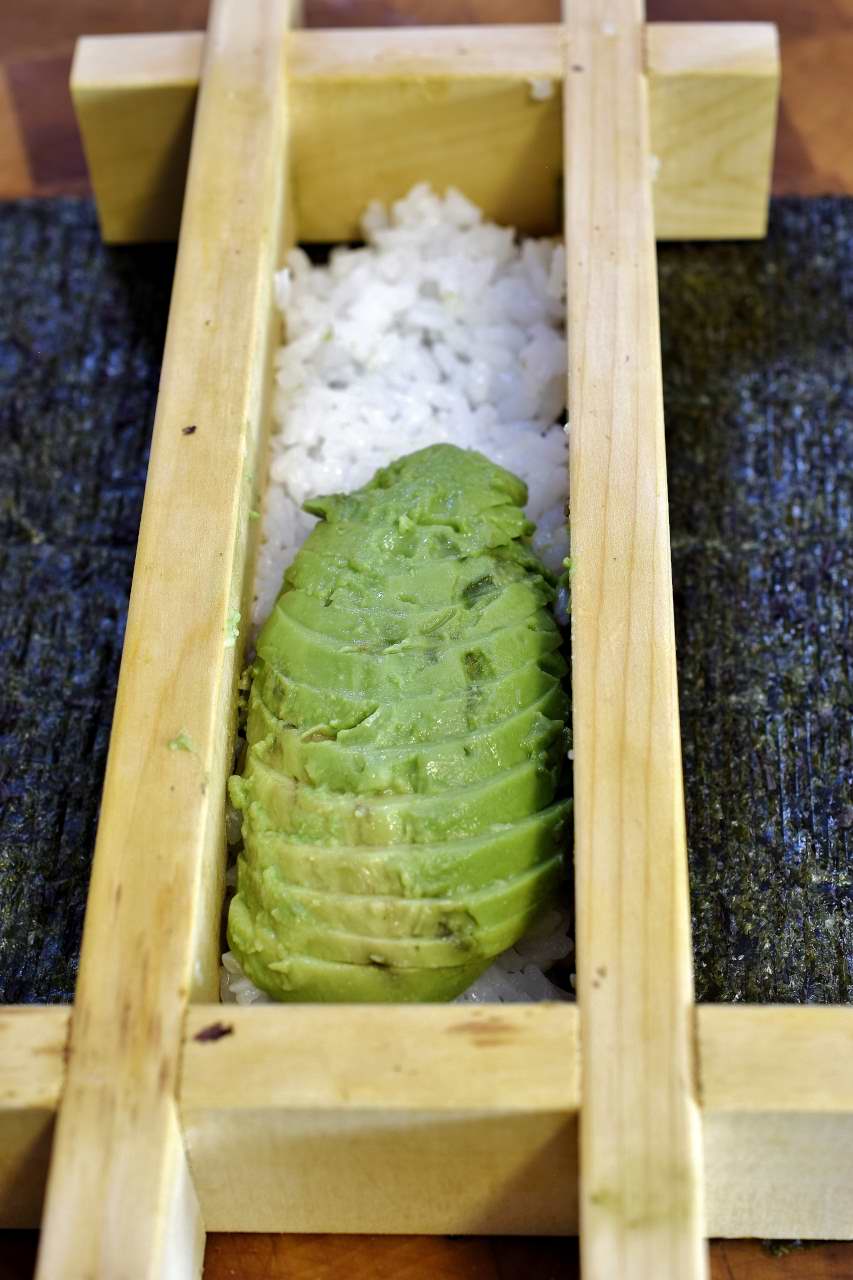
You can see how the bias in the slices is positioned. This makes the next step very easy.
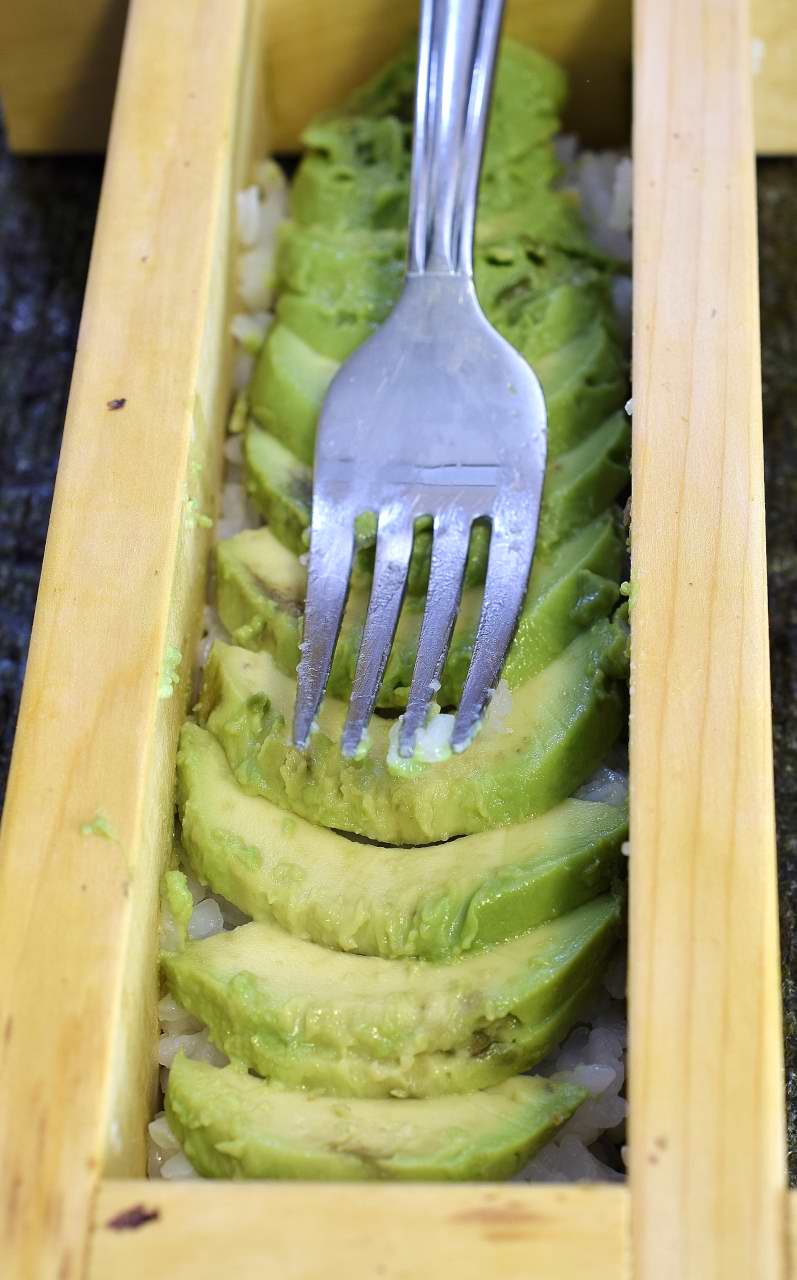
Use a fork to slowly work the avocado down to the other end of the frame. Avocado is oily and rice is sticky, so, again, relax. This is very easy.
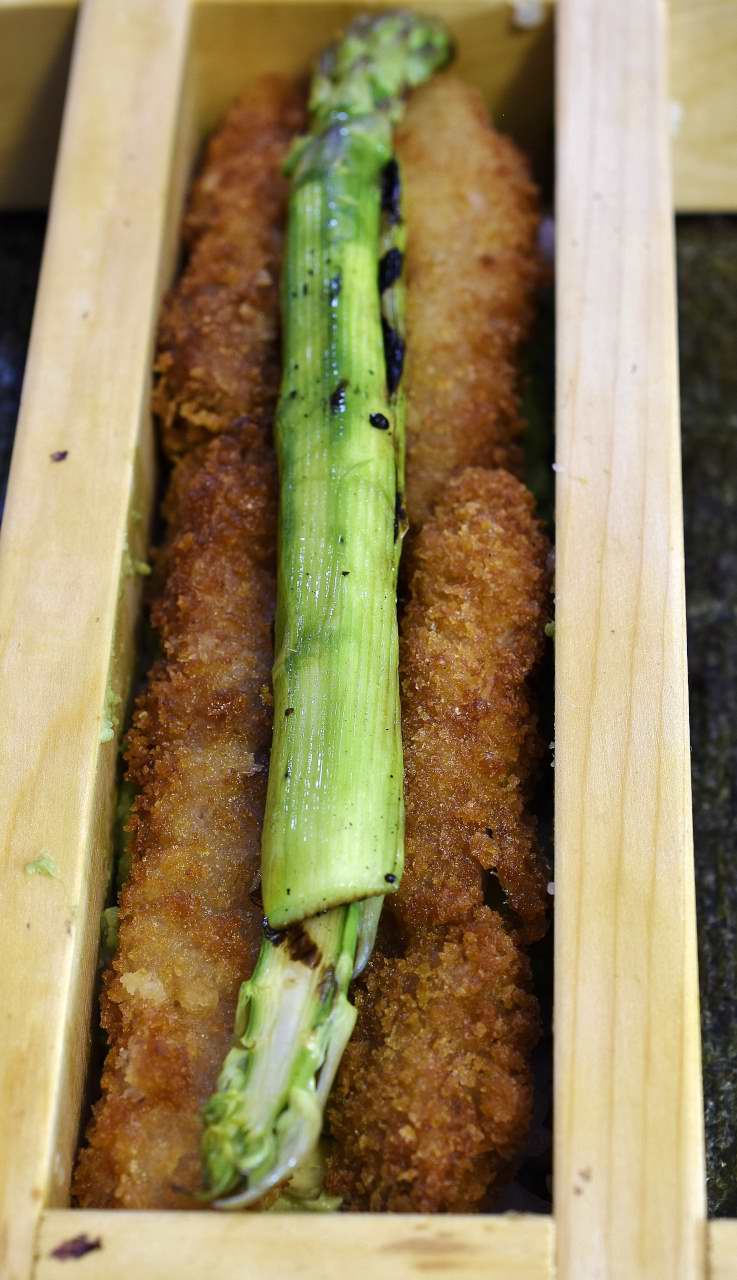
Lay two of the strips of pork in the rice, and then the asparagus, with the tips pointing out. Even that doesn’t really matter.
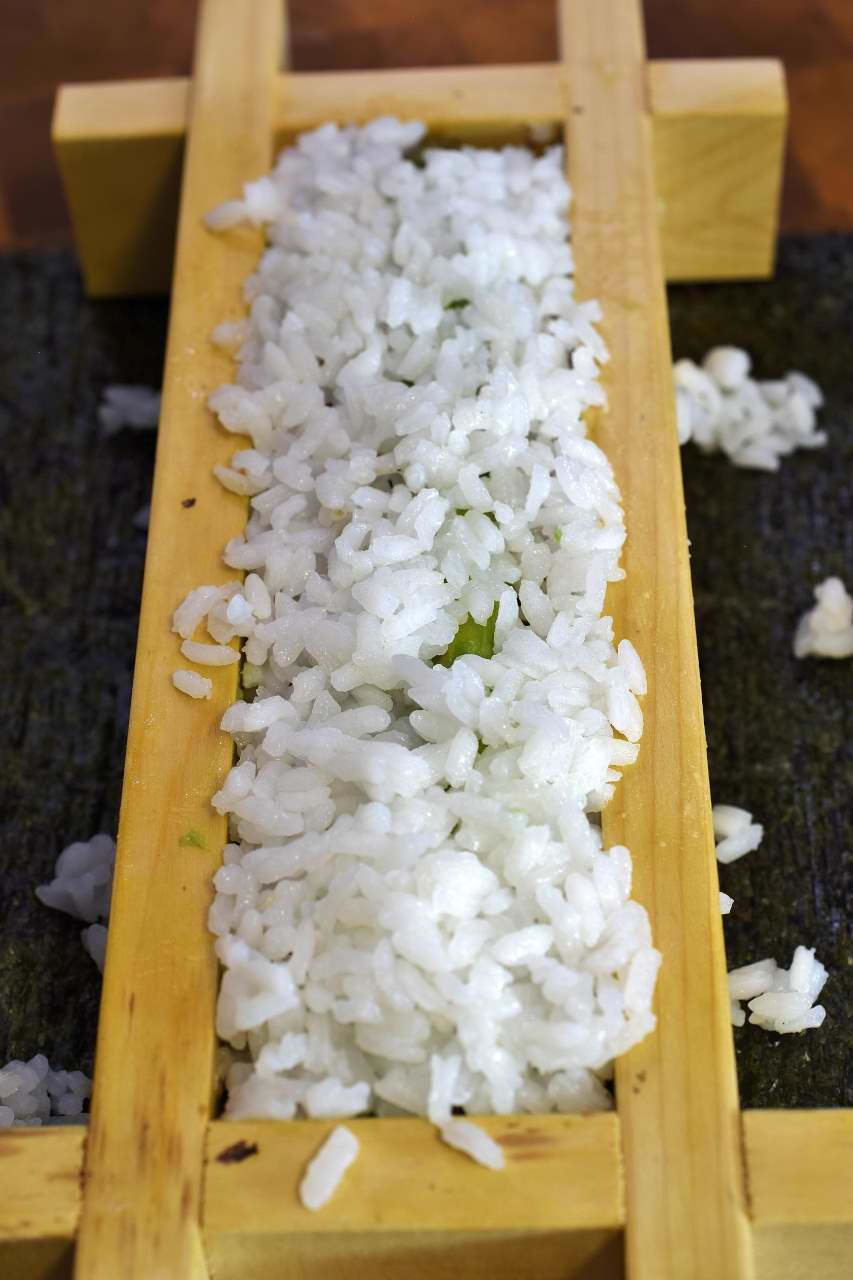
Use that same fork to cover everything with a little more rice. Cover the rice and frame with a sheet of plastic wrap.
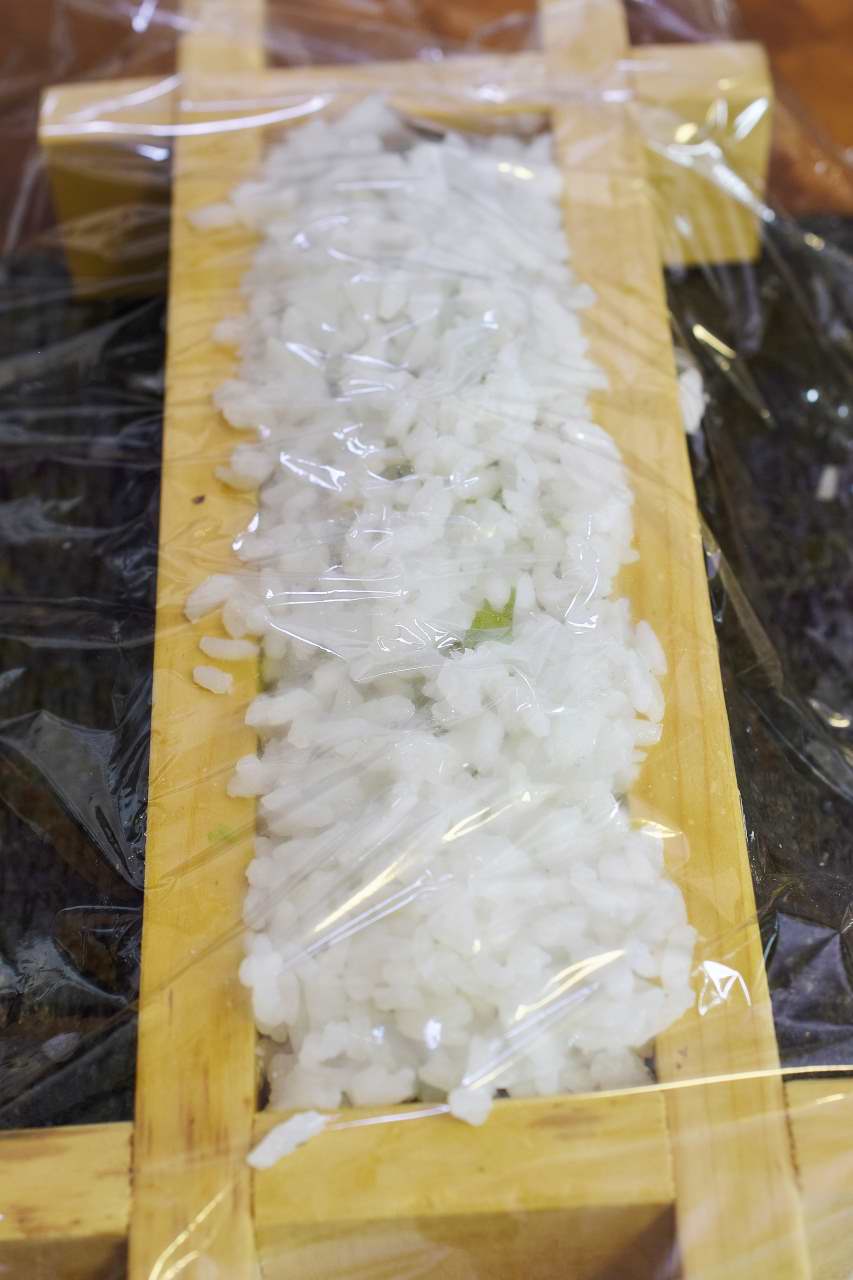
Sushi preparers use plastic wrap for a lot of things.

Press the insert that comes with the mold down on the plastic. Hold the insert down and lift the frame up and off. Set aside.

Lift the insert off and carefully remove the plastic.
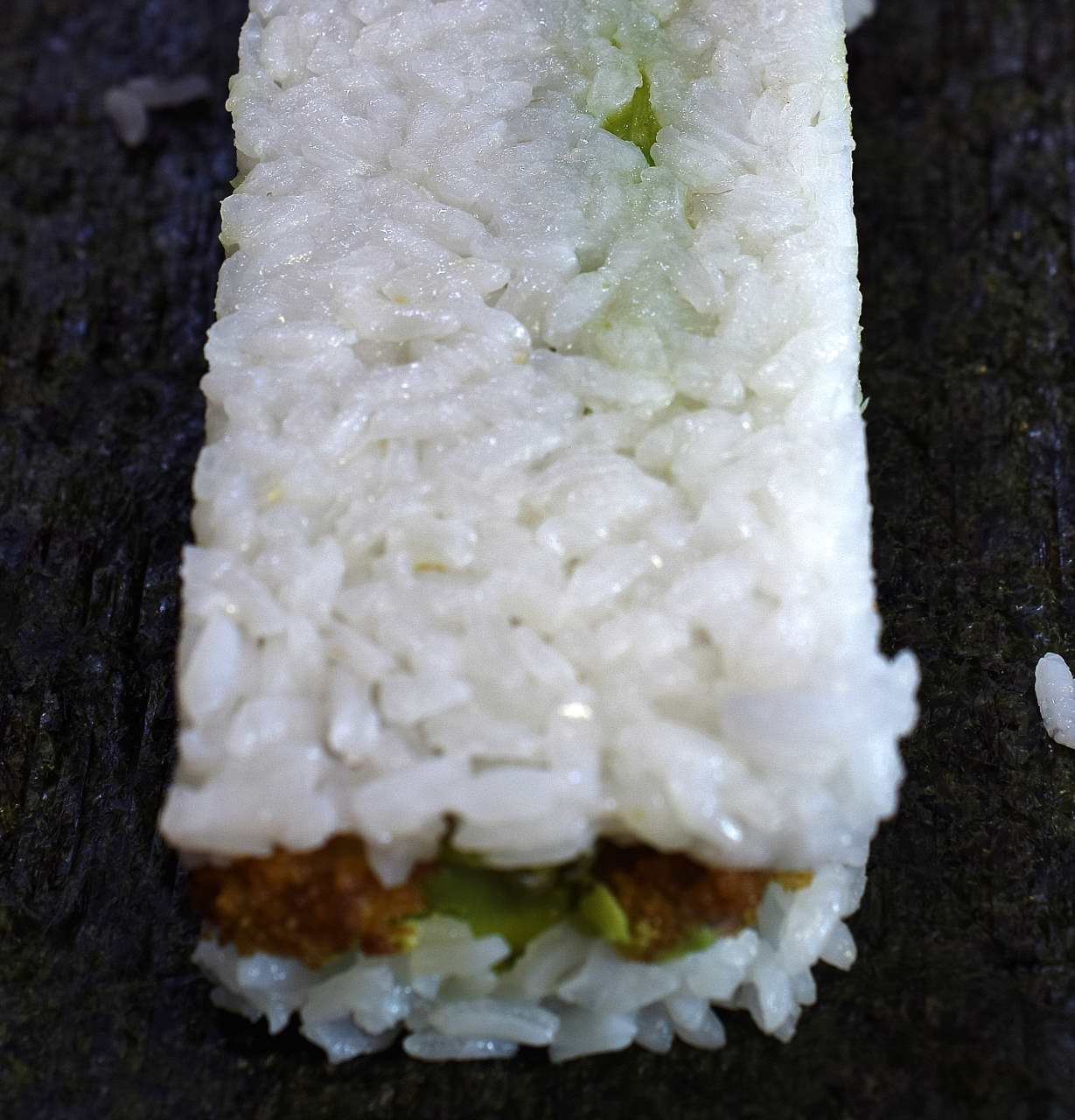
This is what you get. Return the sushi frame to cold water to remove any debris that accumulated.
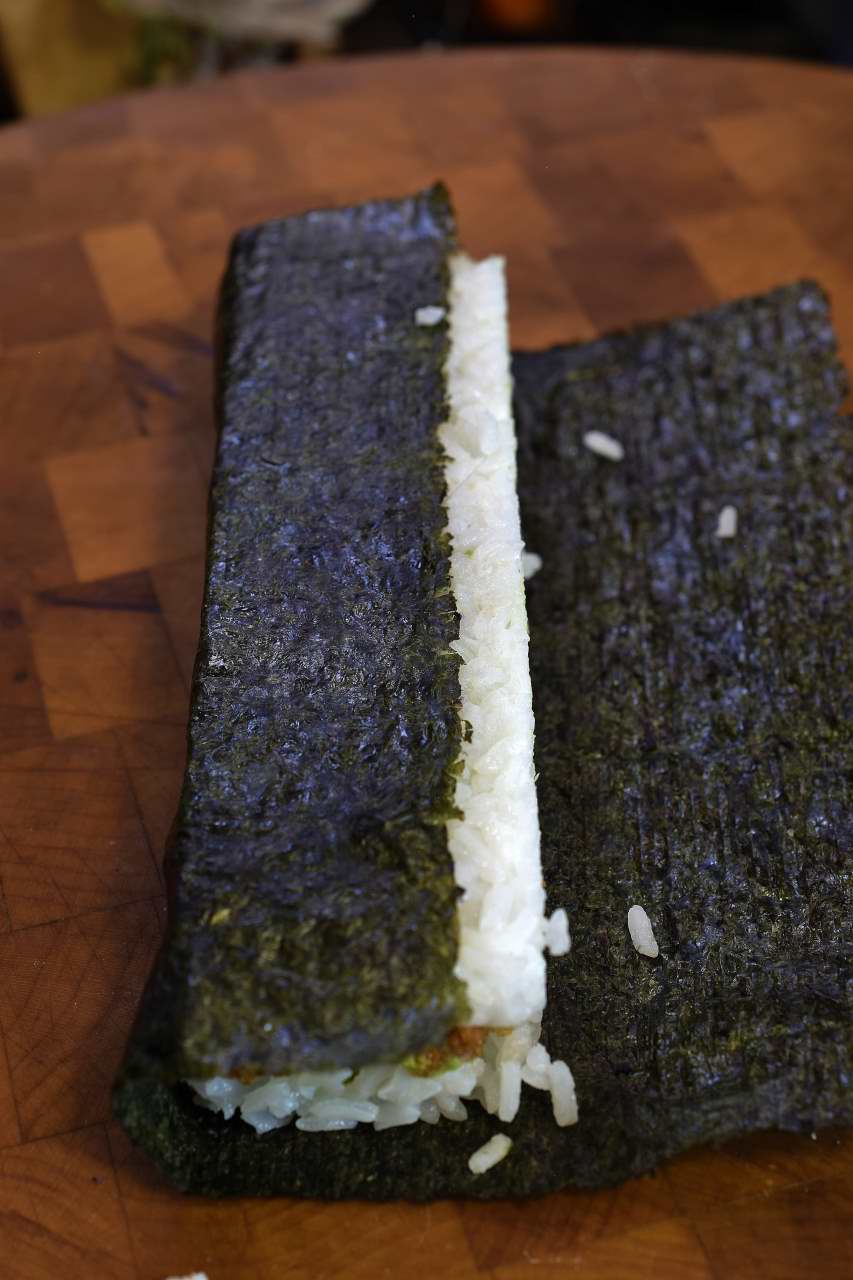
Fold the nori over the rice from one side.
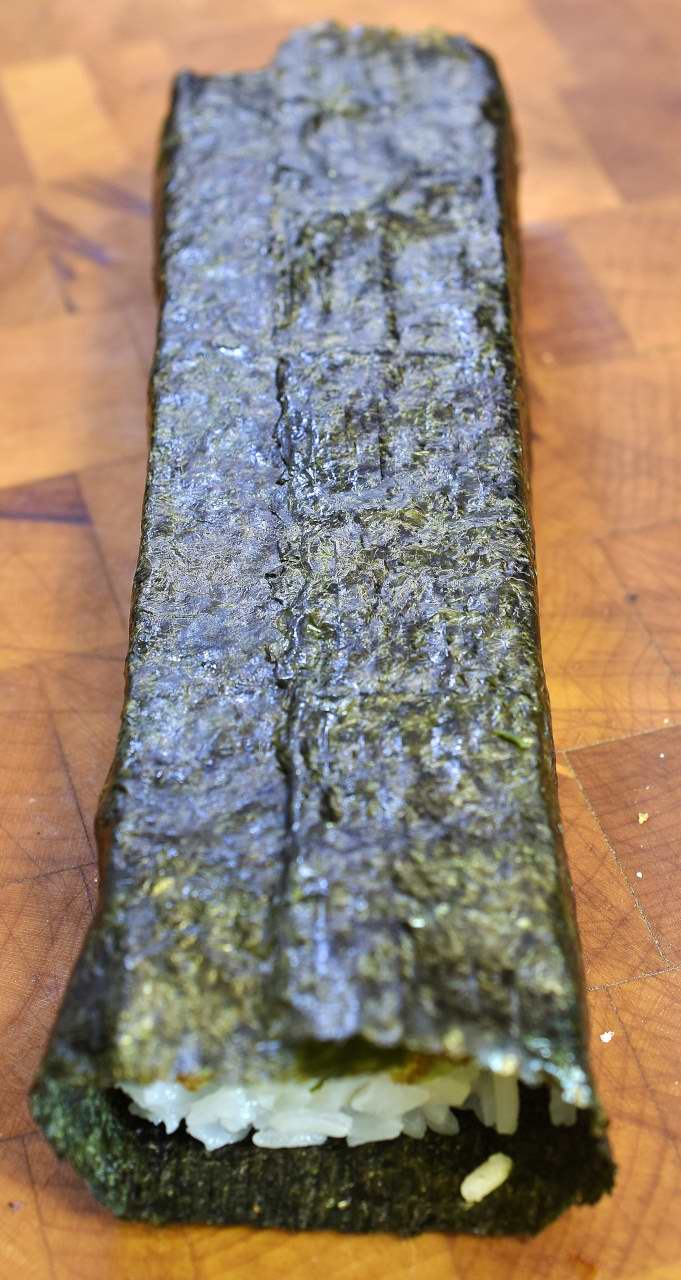
And then the other. There is just enough moisture in the rice to soften the nori–again, very easy. Sushi is many steps, but they are all simple if you can relax!
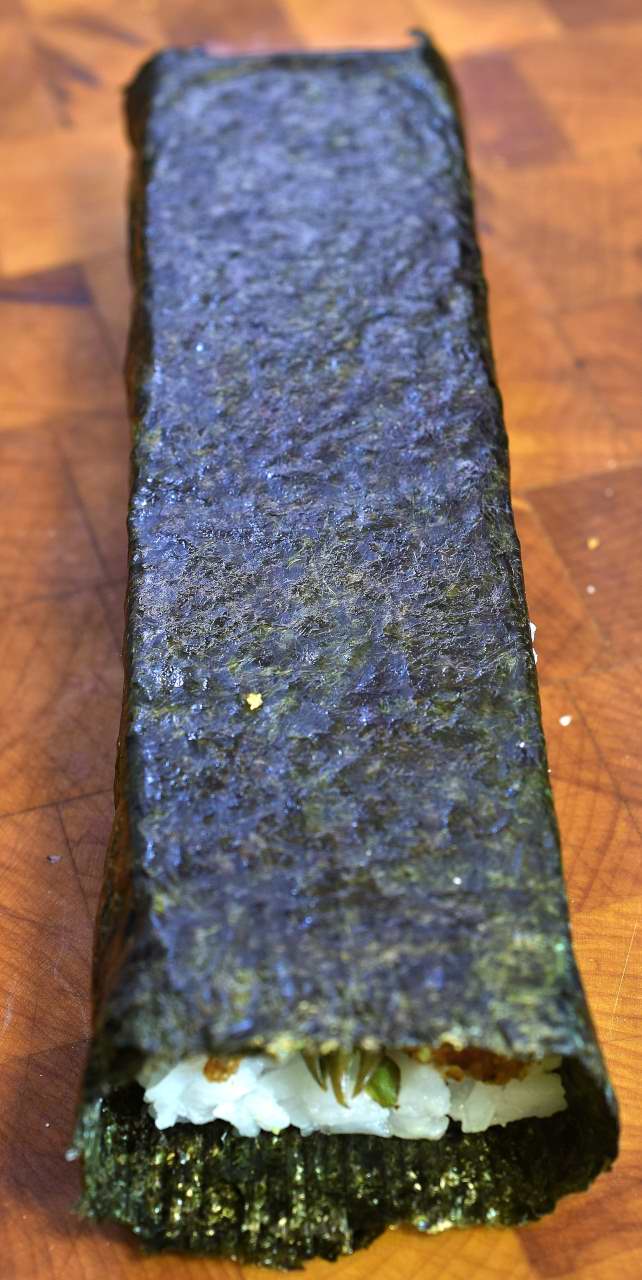
Turn the maki over so that the seam is on the bottom. Set aside, and repeat the assembly process.
The next part is easy, IF you have a sharp knife. It does not have to be an expensive knife. Expensive knives get dull just like cheap knives. I have a moderately priced knife that I use just for sushi. It never gets dull because it never cuts anything firmer than maki.
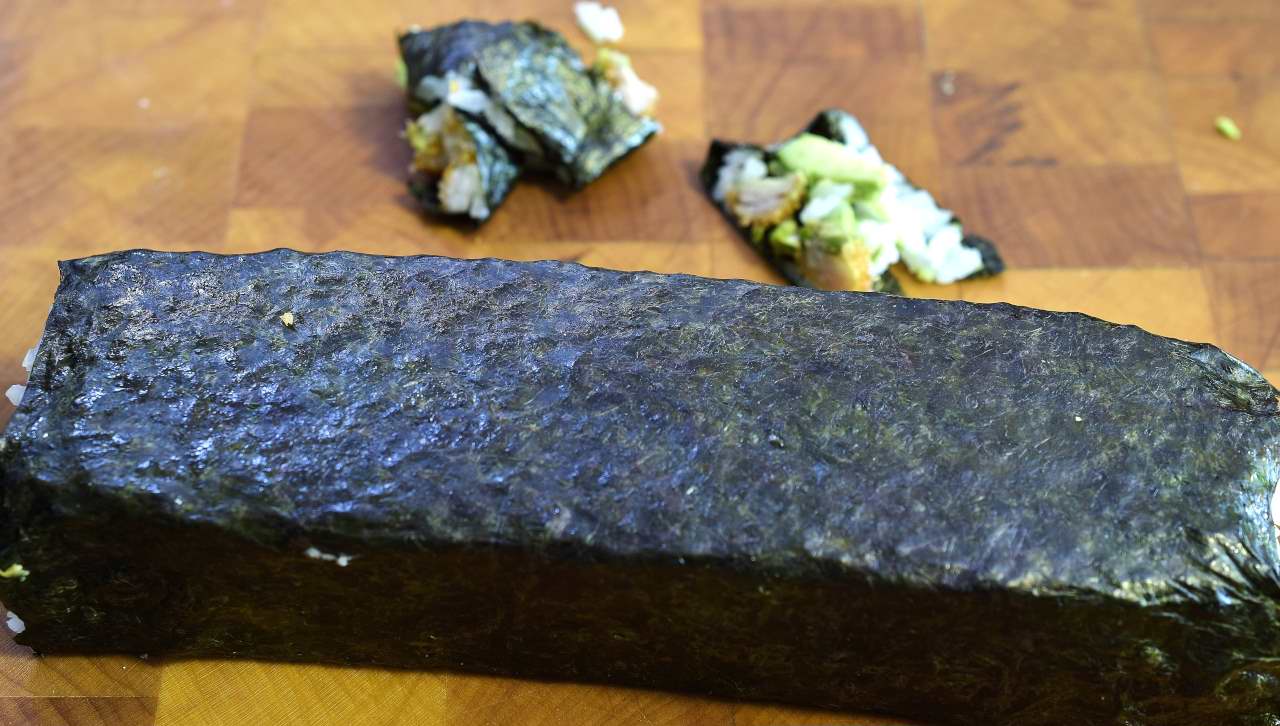
Moisten a paper towel, fold it up into a small pad and drizzle it with vinegar. Use this to clean and moisten the knife in between strokes. Westerners tend to exert force on the knife when we are “pulling” it towards us. I was taught to exert a LITTLE force and a long stroke when you “push” on the knife to cut the roll. It works.
Trim the ends off of the tonkatsumaki. Run the knife down the paper pad. Cut the maki in half. Run the knife down the paper pad. Cut each half in half. Run the knife down the paper pad. Cut each quarter in half. Run the knife down the paper pad and set aside.

This gives you eight slices. Now you decide how you want them to look. I usually put only four on a plate so as not to crowd, but it depends on the size of the plate. Here are some examples:
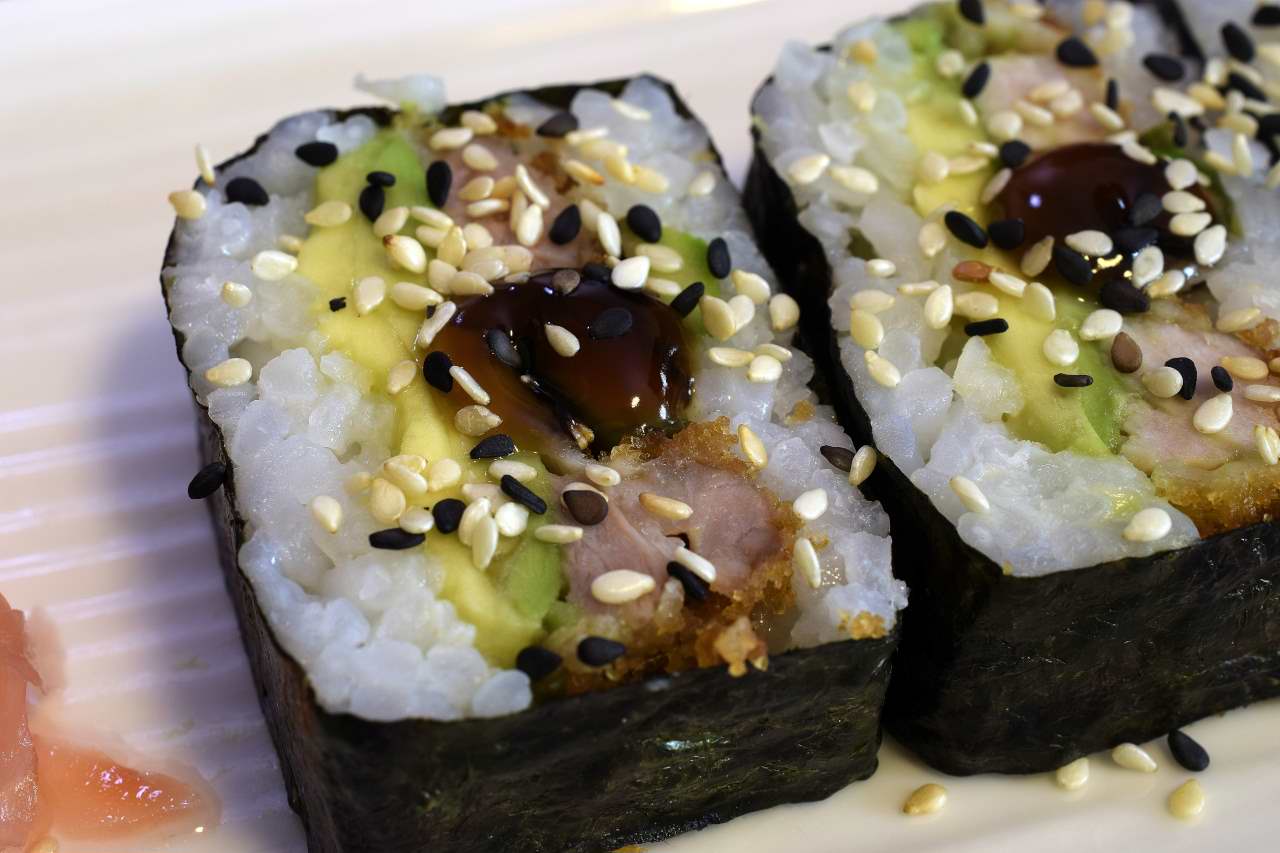
Laid flat on the plate with a single drop of the thickened shoyu. Again, you don’t need to buy this just for sushi. There are a zillion Asian sweet thickened soy-type sauces–Hoisin, oyster, kecap manis etc. I just keep one of those around. Sprinkled with sesame seeds or not. Do your thing. Pickled ginger always appears on the plate. Even people who hate sushi will eat the pickled ginger.
Sushi restaurants put what they call wasabi on the plate. It’s usually just dried horseradish dyed green because wasabi is perishable and very expensive. I don’t keep it around. There are versions available in a tube, and from companies that make mustard and so forth. If I want a little wasabi inside the maki, I use one of those, but I forego it on the plate. No big deal.
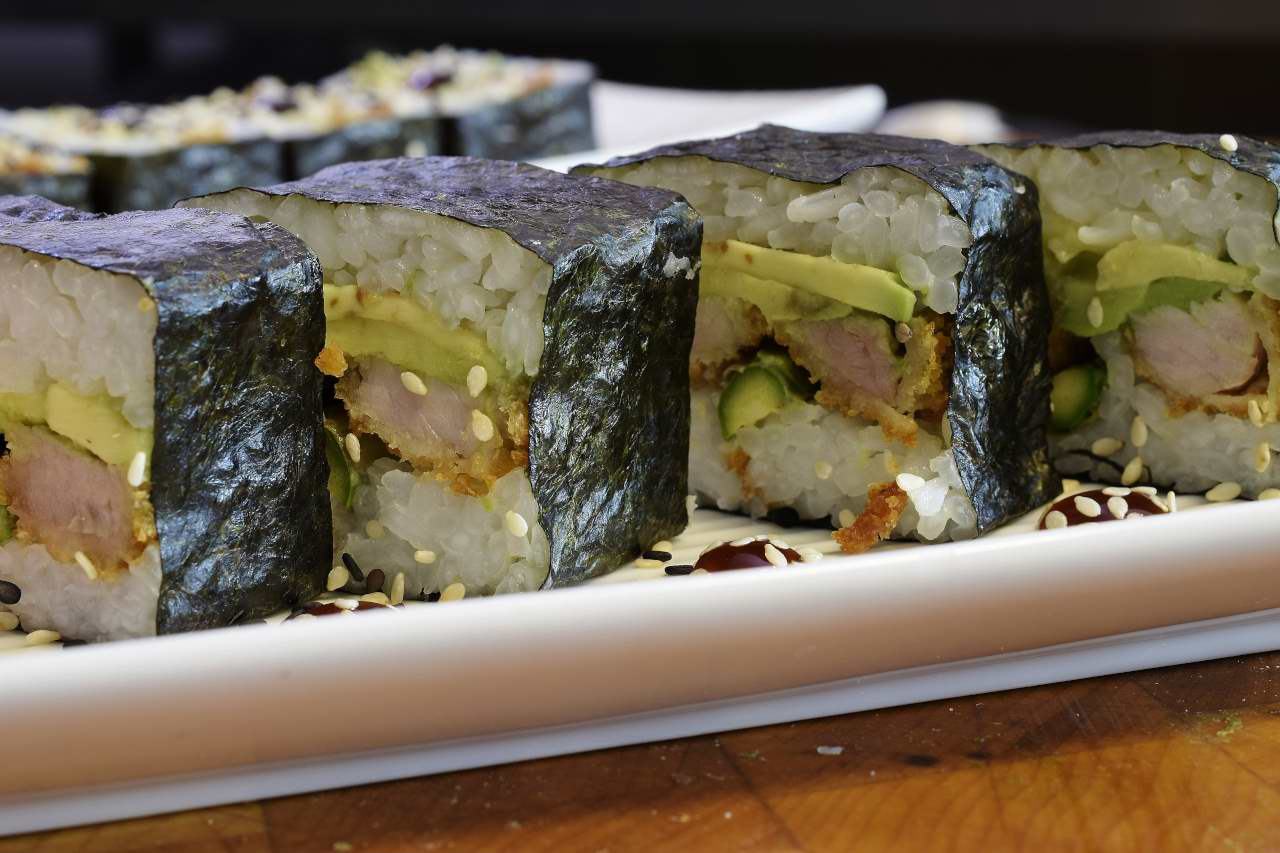
They are wide enough to stand up easily. Just like downtown.

The appearance is striking, even when an amateur does it. You just have to be a little careful, a little tidy, and relaxed.
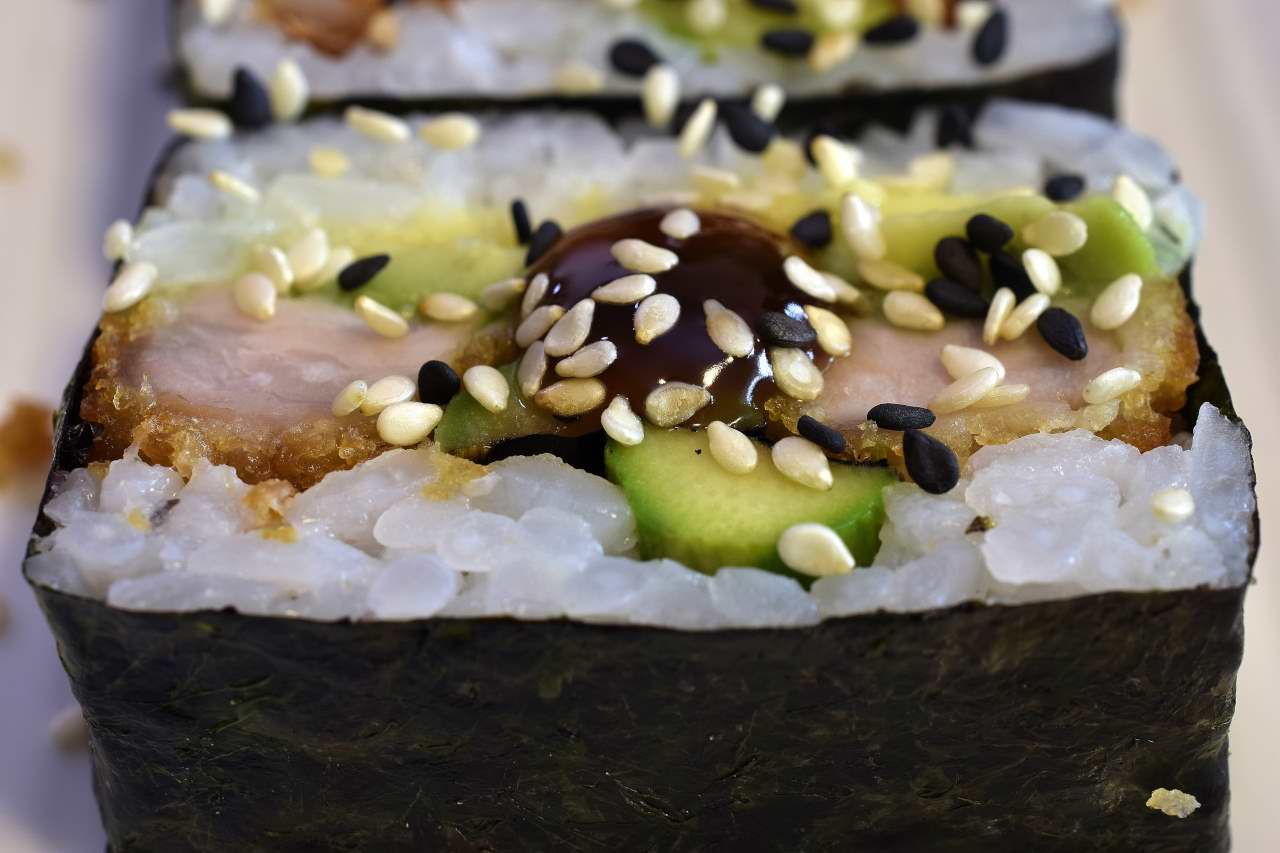
Sushi always photographs well. Little things, very straight, empty spaces. You can wrap the whole thing in plastic and squeeze the block until it’s a little rounded on one side. If you have a bamboo mat, you can make it perfectly round.
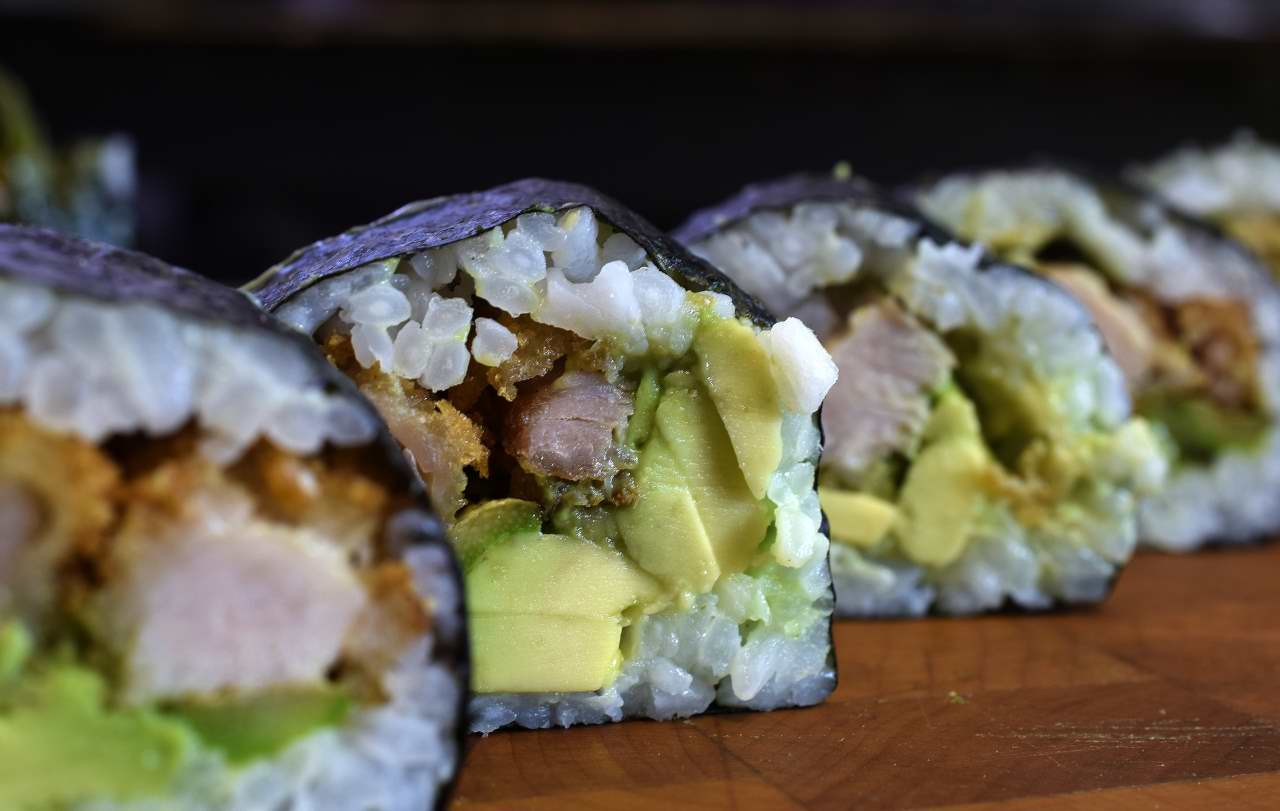
Great for parties. Try to use a plate that looks kind of like a boat. That’s tonkatsu sauce the recipe is HERE.
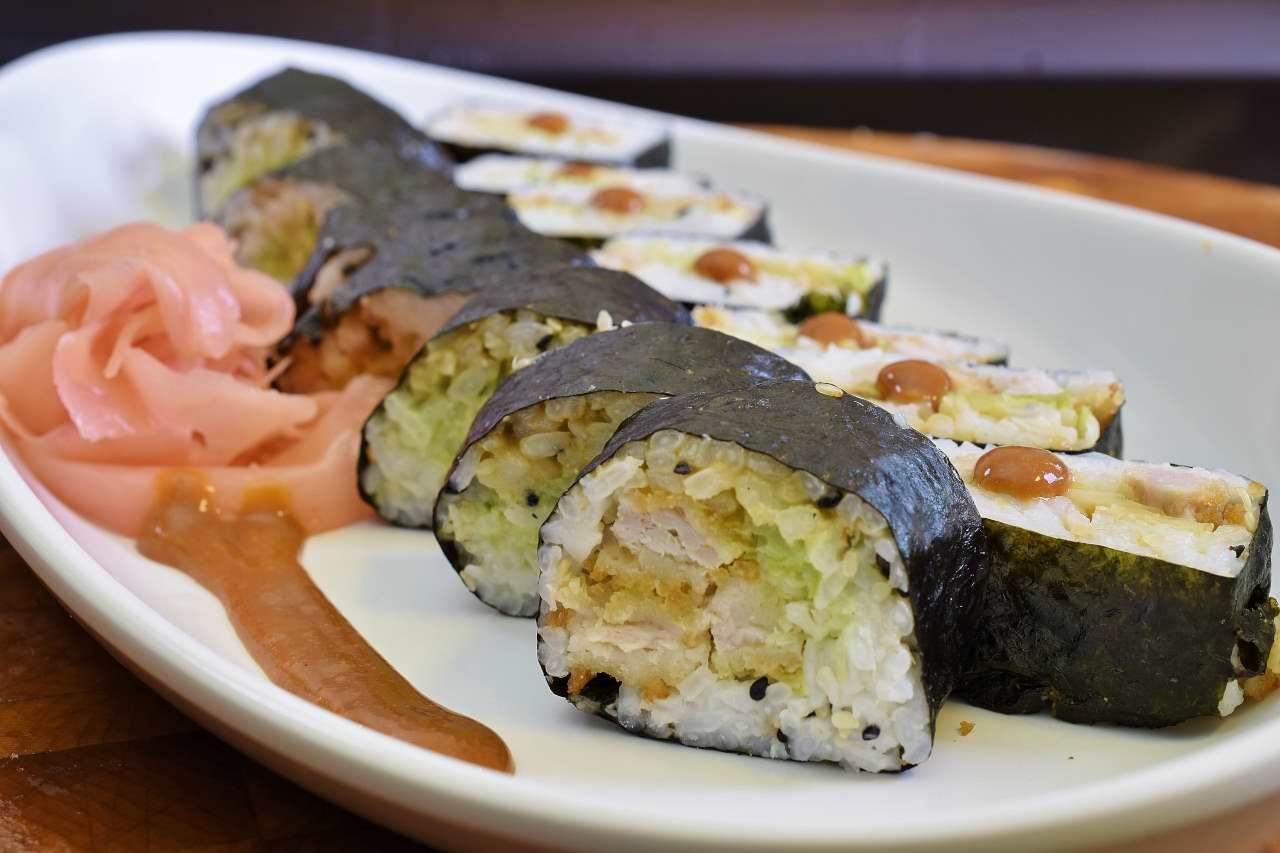
Happy Rolling!
